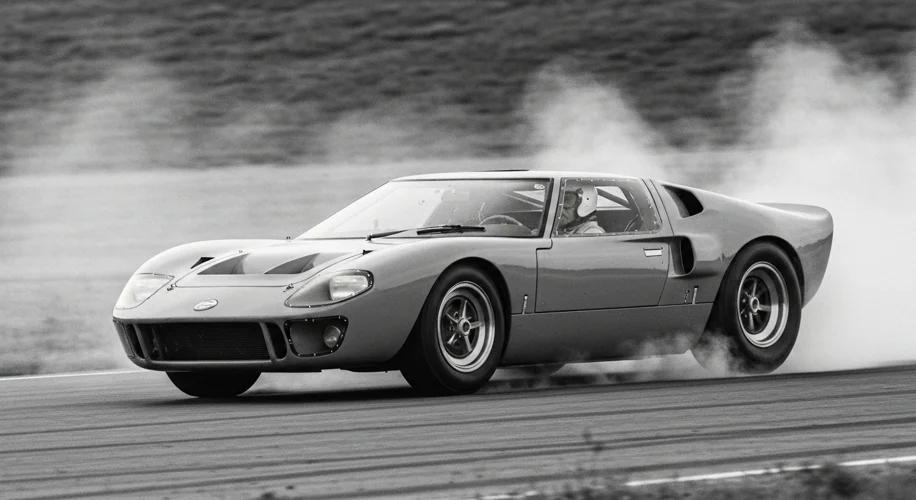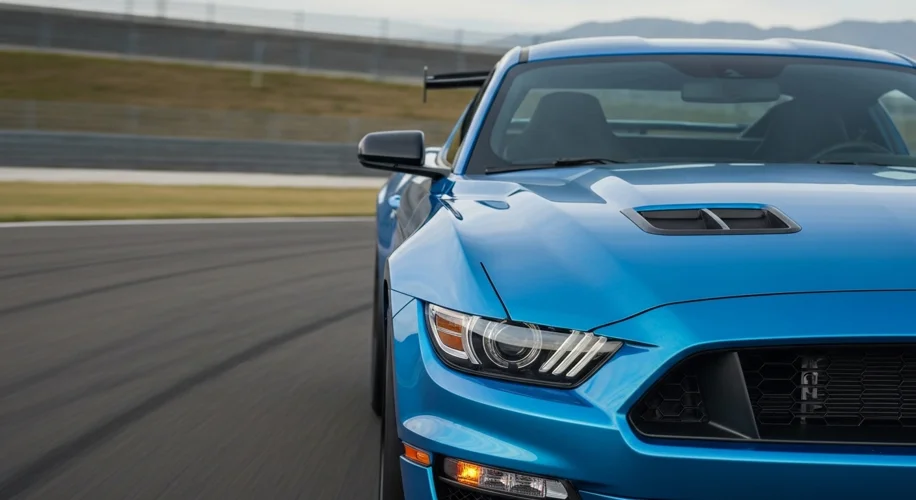In the annals of automotive history, few machines evoke the sheer spirit of American racing prowess like the Ford GT. It’s a nameplate synonymous with victory, innovation, and an unwavering pursuit of speed. But like any legend, the GT’s journey has been a dramatic saga of triumph, near-extinction, and triumphant rebirth.
Our story begins not with a sleek supercar, but with a bitter rivalry. In the early 1960s, Henry Ford II, fueled by a potent mix of business ambition and personal pride, sought to acquire the venerable Italian marque Ferrari. The goal was simple: to leverage Ferrari’s racing pedigree to dominate the grueling 24 Hours of Le Mans, a race that had become the ultimate proving ground for automotive engineering. However, at the eleventh hour, Enzo Ferrari, perhaps sensing a loss of control over his precious creation, abruptly pulled the plug on the deal.
This rejection ignited a firestorm within Ford. Humiliated and determined, Ford declared war on Ferrari, vowing to beat the Italian giants at their own game, on their own turf. The mandate was clear: build a car that could not only compete with Ferrari but utterly vanquish it at Le Mans. Thus, the Ford Advanced Vehicles (FAV) division was born, tasked with the monumental challenge of creating the GT40.

The GT40, named for its approximate height in inches, was a radical departure. Designed by British engineer Eric Broadley and refined by American motorsport legend Carroll Shelby, it was a low-slung, aerodynamic beast powered by a monstrous Ford V8 engine. Its name was a nod to its target, the Ford GT program, and its low stance – 40 inches from ground to roof. The early years were fraught with mechanical gremlins and near misses, but the Ford team persevered. The heartbreak of mechanical failures in 1964 and 1965 only fueled their resolve.
Then came 1966. The world watched as three Ford GT40 Mark IIs stormed Le Mans, utterly dominating the race. In a stunning display of Ford’s newfound dominance, the GT40s crossed the finish line in a photo-finish formation, securing a legendary 1-2-3 victory. This wasn’t just a win; it was a statement. Ford had achieved its audacious goal, shattering Ferrari’s six-year reign and etching the GT40 into racing immortality. The victory reverberated through the automotive world, proving that American engineering could conquer the most demanding international circuits.

The GT40 continued its winning streak, securing victories at Le Mans in 1967, 1968, and 1969, cementing its status as a racing icon. However, by the late 1960s, the escalating costs of racing and evolving regulations led Ford to withdraw from top-tier motorsport. The original GT40 era came to a close, leaving behind a legacy of raw power and unparalleled success.
Decades later, the allure of Le Mans and the legend of the GT remained potent. In the early 2000s, Ford decided to revive the spirit of the GT, not as a race car initially, but as a road-legal supercar that paid homage to its illustrious ancestor. The result was the Ford GT (2004-2006). This modern interpretation captured the visual essence of the original GT40, with its dramatic lines and mid-engine V8 powerplant. It was a powerful statement of Ford’s engineering capabilities, offering blistering performance for the road.
But the true revival, the one that brought the GT back to its spiritual home, came with the announcement of the Ford GT for the 2016 racing season. This was not a mere homage; it was a direct assault on the modern Le Mans competition, specifically targeting the GT-class cars. The new GT, a marvel of carbon-fiber construction and twin-turbocharged V6 power, was designed from the ground up for aerodynamic efficiency and raw speed.

In 2016, on the 50th anniversary of the original GT40’s historic triumph, the new Ford GT returned to Le Mans and secured a stunning victory in its class. It was a poetic full circle, a testament to Ford’s enduring commitment to performance and a powerful reminder that the spirit of the GT was alive and well. The GT’s journey from a defiant response to a corporate snub to a multi-generational racing champion is a compelling narrative of ambition, innovation, and the relentless pursuit of automotive excellence. It stands as a proud symbol of American performance, a machine that continues to roar its legacy across the finish lines of history.

